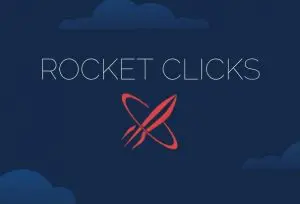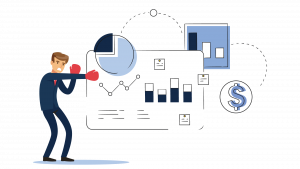As we discussed in our previous post, there are plenty of ways for potential customers to find your website. Now it’s time to learn what these different types of traffic can teach you about your customers.
This time, let’s pretend you’re the owner of GreatBikeCompany, rather than a potential customer. As the owner, you’re curious to find out how people are getting to GreatBikeCompany.com, what they do once they get there, and, ultimately, what traffic sources are providing the most value. Luckily, analyzing the traffic data in your Analytics account is a great way to get this insight.
Let’s take another look at different types of traffic from our last post and discuss what they can teach us about those visitors.
Social Traffic
Example: You share a link to your “Buying the Right Bicycle” guide. Sarah clicks on the link and reads the guide.
Many businesses thrive on Social traffic. Whether it’s through their own social media campaigns or natural discussion from existing customers, Social traffic is (typically) made up of people who have a genuine interest in your business, services, or products.
This type of traffic is typically associated with brand familiarity. It could be avid fans of your business checking out your latest blog post, or maybe it’s one of your customers recommending a product to a friend.
In a very general sense, social traffic will be proportional to your own social media efforts. If you don’t have a presence on social media, you shouldn’t expect significant amounts of social traffic – though people may be talking about your business anyway.
Social traffic can be helpful for:
- Increasing brand awareness
- Keeping existing customers interested
- Gaining new customers through existing customers’ recommendations
Referral Traffic
Example: Your bikes receive a recommendation (along with a link) on BillsBikingBlog.com. Rodney, a regular reader of the blog, clicks on the link.
Like Social, Referral traffic also has roots in brand awareness, but it’s typically beyond your control. Ideally, it means that people love what your company has to offer and passes it along through their own website. This, in turn, usually leads to high-quality traffic (and the link has other SEO-related benefits as well).
On your end, you can increase referral traffic by building meaningful relationships with websites that are relevant to your industry. Then, when you have something of interest to them and their audience, they’ll be more inclined to link to it.
Referral traffic can be helpful for:
- Attracting highly-qualified traffic from other industry-relevant sites
- Establishing your site as a significant contributor to your industry
Organic Search Traffic
Example: Owen is looking for a new bike, so he searches “best mountain bikes under $1,000.” Since you’ve got a great product that meets the price (and maybe a great SEO agency), GreatBikeCompany.com is the #1 result. Naturally, Owen clicks this link.
Organic traffic is anyone who comes to your site through a search engine. This traffic is awesome because it’s ‘free’ in the sense that you don’t pay for the traffic or the listing. Instead, you need to earn the listing by being an authority in your industry and satisfying users’ queries.
People arrive at websites organically for many, many reasons. Sometimes, it’s just to price check, compare features, or find other information. Other times, they have a specific need and are ready to make a purchase. To make the most of Organic Search traffic, you’ll want to have pages on your site that attract both kinds of searches.
Organic Search traffic can be helpful for:
- Attracting new customers who are already interested in your products/services
- Providing a consistent source of traffic
- Establishing your site as an authority in your industry
Paid Search Traffic
Example: You’re running a PPC campaign for your most popular 10 speed bike. While Paul is doing a Google search for “new 10 speed bike for sale,” he sees your ad and clicks on it.
A well-planned paid search campaign can be a valuable part of your marketing strategy. You can use it to target potential customers who are already looking for your products or services, and only have to pay when someone actually engages with your ad.
While PPC campaigns are rarely perfect, they usually attract customers that are preparing to make a purchase (though there can also be brand familiarity benefits). However, poorly researched campaigns can draw in significant amounts of unqualified traffic, which wastes your money. If you’re just starting out, we recommend hiring a PPC agency to manage your Paid Search marketing.
Paid Search traffic can be helpful for:
- Attracting ready-to-purchase customers from search results
- Luring potential customers away from competitors
- Supporting sales and other promotional pushes
- Can also help improve brand awareness
Direct Traffic
Example: Diane has previously been to GreatBikeCompany’s website, but wasn’t ready to make a purchase. Now she is, so she types GreatBikeCompany.com into her navigation bar and visits the site.
Direct traffic is a bit of a catch-all term, but it generally refers to visits that came directly to your site, rather than getting there through a third-party like Google, Facebook, or BillsBikingBlog.com.
While direct traffic can be an indication of how successful your brand is, it can be a bit tricky to decipher true user intent because Analytics will consider any unclassified traffic as Direct. Traffic you see as Direct could be customers who have decided to buy your product and navigated to your site on their own, but it could also be someone who clicked on a misclassified ad campaign or suggest other faulty data.
Direct traffic can indicate:
- Repeat customers
- Success of offline marketing efforts
- Visits from other untracked sources
Note: Once you become more familiar with Analytics, you can limit much of the misreported direct traffic with campaign tagging.
Now What?
Armed with your new knowledge of how people can get to your website, you should take some time to evaluate where your website is currently getting traffic from and how that equates to your current marketing strategy. Are there any areas that need significant improvement?
Think about your marketing goals and then decide which type(s) of traffic would best complement them. Want more brand awareness? It might be time to beef up your social media accounts. Think your product satisfies a common need, but not seeing the traffic to prove it? You might need to optimize your site for search.




















